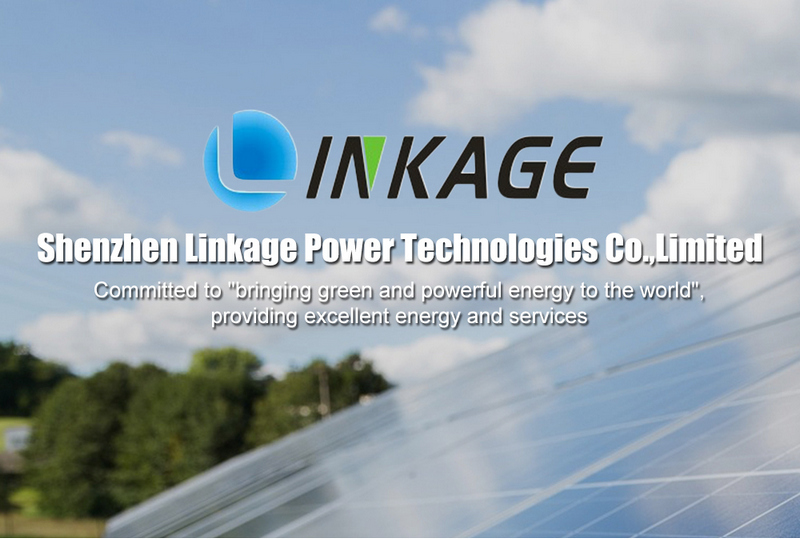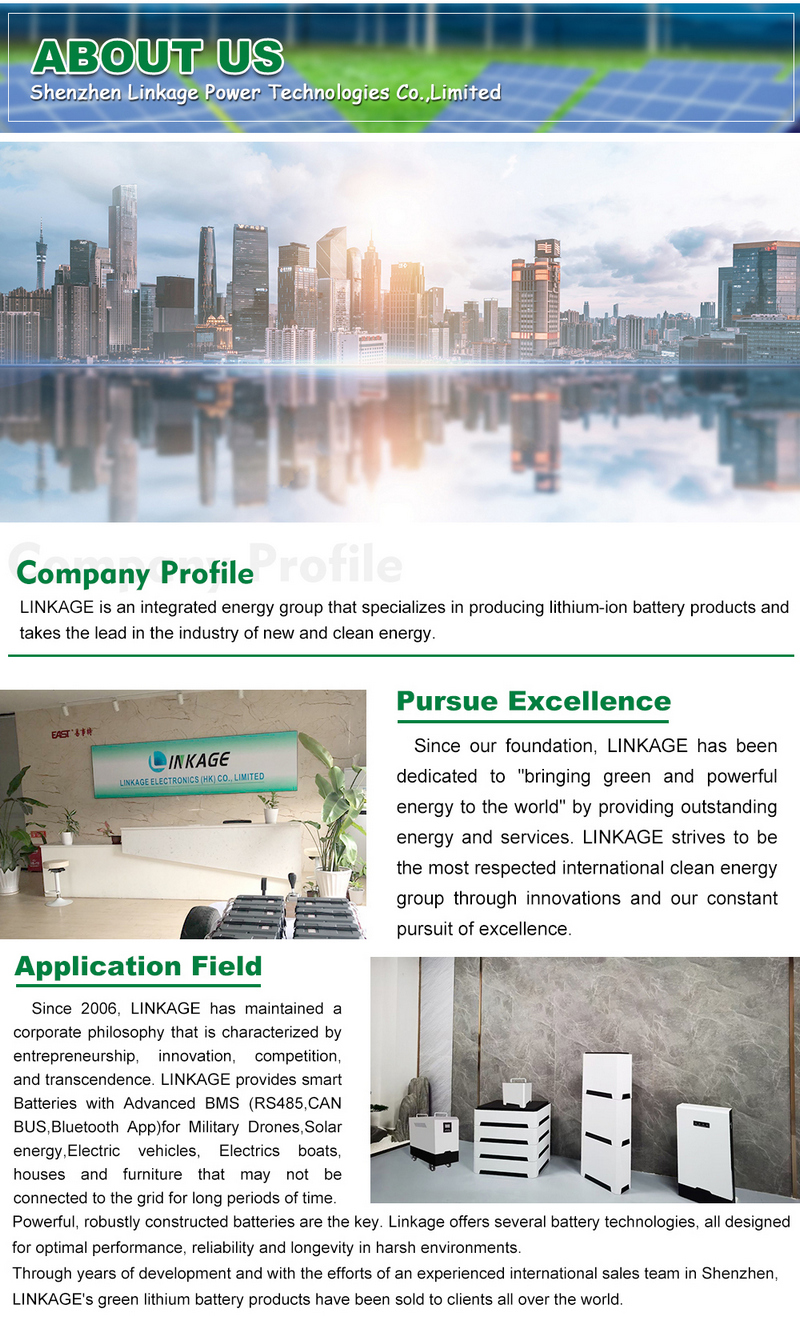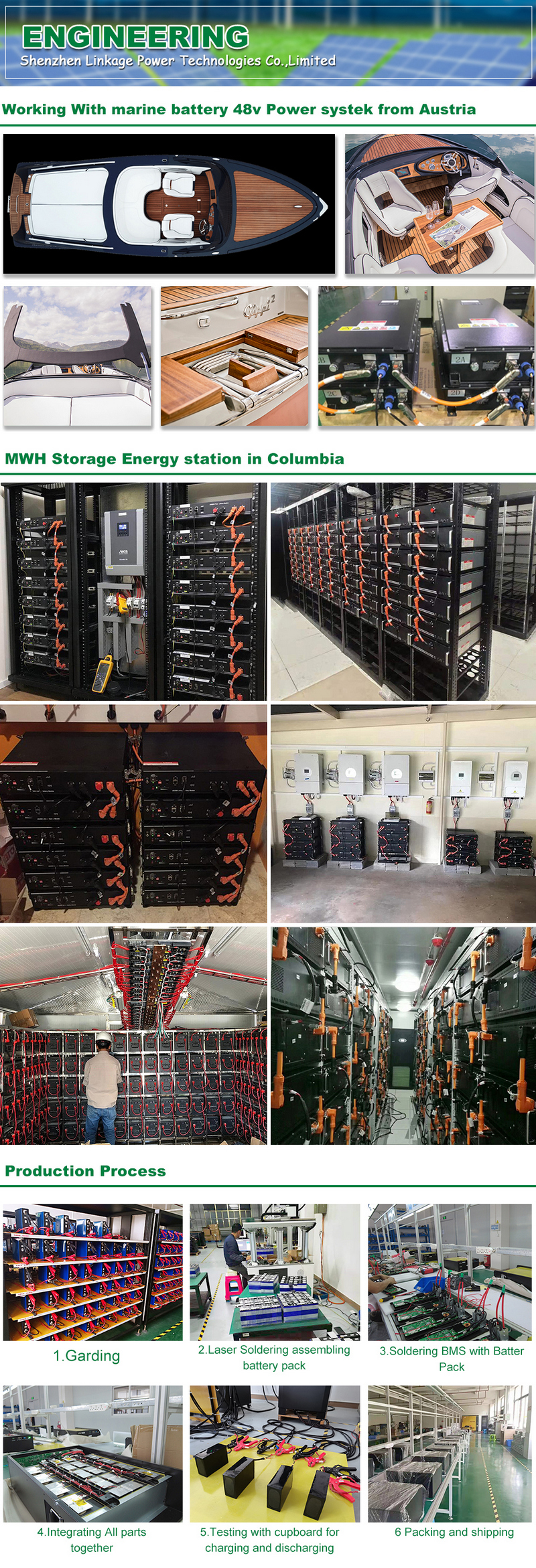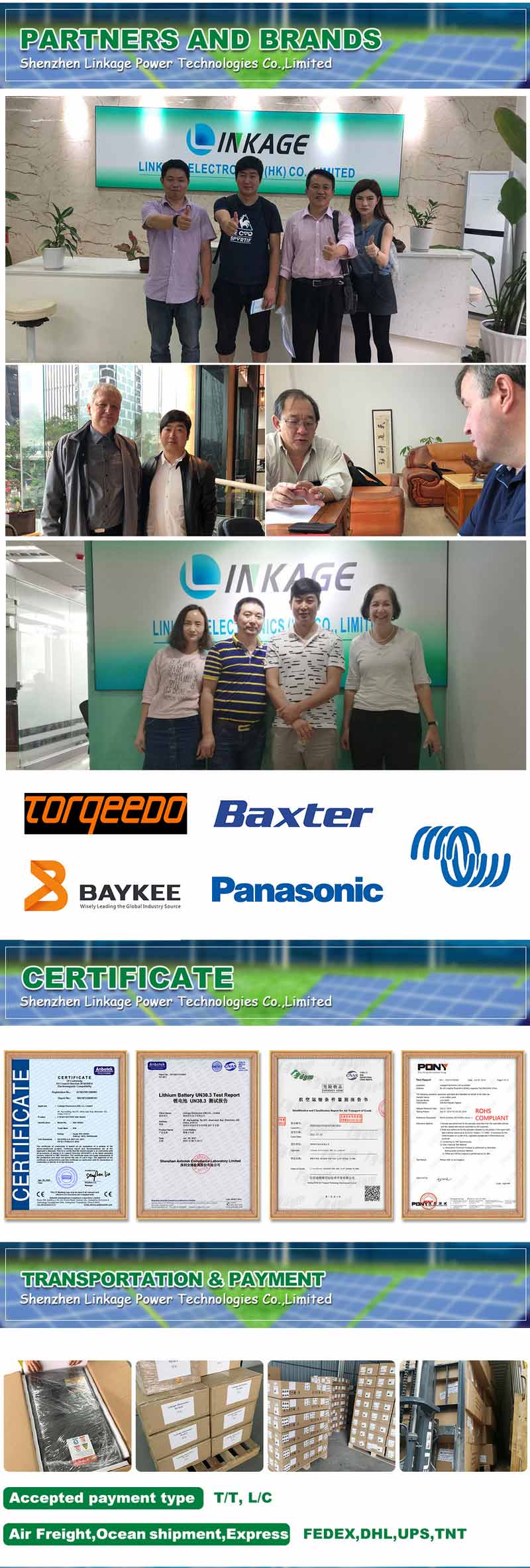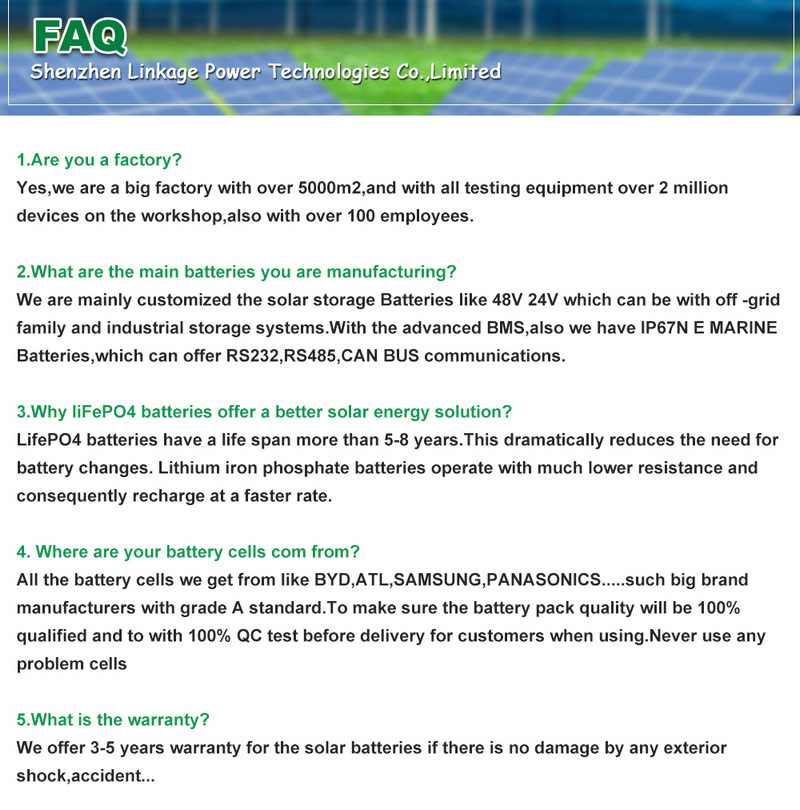

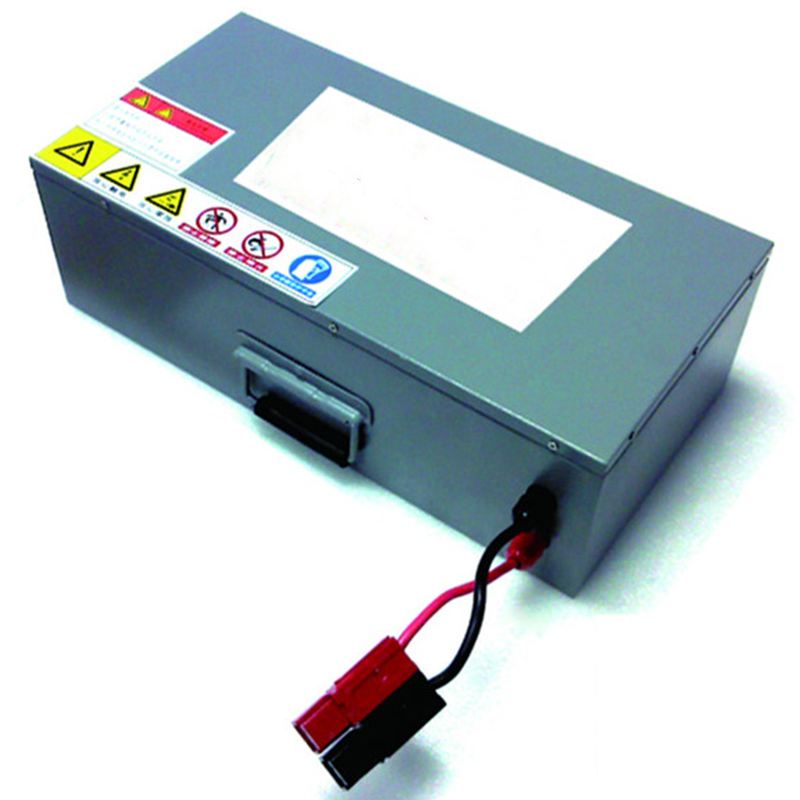

Golf cart LIFEO4 Battery 72V 100Ah E-Z-Go
1.Long cycle life: 3000+cycles
2.High voltage and engergy density
3.Low self-discharge
4.Environment friendly
5.No memory effect
6.High safety and reliability
Application: Solar system, energy storage…

| No. | Items | Specifications |
| 1 | Nominal Voltage | 72V |
| 2 | Nominal Capacity | 100Ah |
| 3 | Cells | LiFePO4 3.2V 100Ah cell |
| 4 | Configuration | 23S33P |
| 5 | Standard Charge Current | 10-50A |
| 6 | Max. Charge Current | 50A |
| 7 | Battery management System (BMS) | Customized |
| 8 | Continuous Discharge Current | 100A |
| 9 | Peak Discharge Current | 150A |
| 10 | Full Charged Voltage | 83.9V(3.65V per cell) |
| 11 | Charge Cut-off Voltage | 89.7V (3.9V per cell) |
| 12 | Discharge Cut-off Voltage | 46V (2.0V per cell) |
| 13 | Net Weight | 106kg |
| 14 | Dimensions | 720*450*340mm |
| 15 | Connector | Anderson Connectors |
| 16 | Operating Temperature | Charging: 0°C ~ 45°C
Discharging: -20°C ~ 55°C |
| 17 | Storage Temperature | (Recommended to store 20 ± 5°C for long term storage) |
| 18 | Cycle Life | 2000 times (80% of initial capacity at 0.2C rate, IEC Standard) |
Advantage of Lithium battery:
1.Long cycle life: 3000+cycles
2.High voltage and engergy density
3.Low self-discharge
4.Environment friendly
5.No memory effect
6.High safety and reliability

1. Solar system, energy storage system, UPS etc.
2. Golf carts, electric vehicles, motorcycle, automobile starter battery, trolley, electric boat etc.
3. Sealed Lead-Acid battery replacement.
4. Forklift, srubbing machine, motive power bank etc.
5. Others: power tools
Modular and quick plug design makes it easy to use and maintenance
Battery can be controlled with remote monitoring via communication interface.
ASIC chip, high precision acquisition, automotive grade material, Lightning Surge Immunity Test, redundancy design, high temperature aging, electron- static discharge, EMC, current balancing technology, maintenance-free battery system, The water detection, smoke detection, collision warning system actively.
Temp Balance & Bonding
Aluminum wire bonding process with bus-bar design, triaxial vibration design, waterproof and dustproof design, structure lightweight design technology, which solved the core issue of power battery, improving the safety, reliability and stability. At the same time, the problem of BATTERY heating, heat dissipation was managed by temperature equalization technology ,which improve the battery performance and life span. PLB continue to optimize the battery pack design, so as to ensure the safety of product. Select between maximum runtime, long service life, small size and low cost.
Rechargeable batteries play an important role in our lives and many daily chores would be unthinkable without the ability to recharge. The most common rechargeable batteries are lead acid, NiCd, NiMH and Li-ion. Here is a brief summary of their characteristics.
Lead Acid – This is the oldest rechargeable battery system. Lead acid is rugged, forgiving if abused and is economically priced, but it has a low specific energy and limited cycle count. Lead acid is used for wheelchairs, golf cars, personnel carriers, emergency lighting and uninterruptible power supply (UPS). Lead is toxic and cannot be disposed in landfills.
Nickel-cadmium – Mature and well understood, NiCd is used where long service life, high discharge current and extreme temperatures are required. NiCd is one of the most rugged and enduring batteries; it is the only chemistry that allows ultra-fast charging with minimal stress. Main applications are power tools, medical devices, aviation and UPS. Due to environmental concerns, NiCd is being replaced with other chemistries, but it retains its status in aircraft due to its good safety record.
Nickel-metal-hydride – Serves as a replacement for NiCd as it has only mild toxic metals and provides higher specific energy. NiMH is used for medical instruments, hybrid cars and industrial applications. NiMH is also available in AA and AAA cells for consumer use.
Lithium-ion – Li-ion is replacing many applications that were previously served by lead and nickel-based batteries. Due to safety concerns, Li-ion needs a protection circuit. It is more expensive than most other batteries, but high cycle count and low maintenance reduce the cost per cycle over many other chemistries.

Table 1 compares the characteristics of the four commonly used rechargeable battery systems, showing average performance ratings at time of publication. Li-ion is divided into different types, named by their active materials, which are cobalt, manganese, phosphate and titanate. (See BU-205: Types of Lithium-ion.)
Missing from in the list is the popular lithium-ion-polymer that gets its name from the unique separator and electrolyte system. Most are a hybrid version that shares performance with other Li-ion. Also missing is the rechargeable lithium-metal, a battery that, once the safety issues are resolved, has the potential of becoming a battery choice with extraordinarily high specific energy and good specific power. The table only addresses portable batteries and excludes large systems that resemble a refinery.
